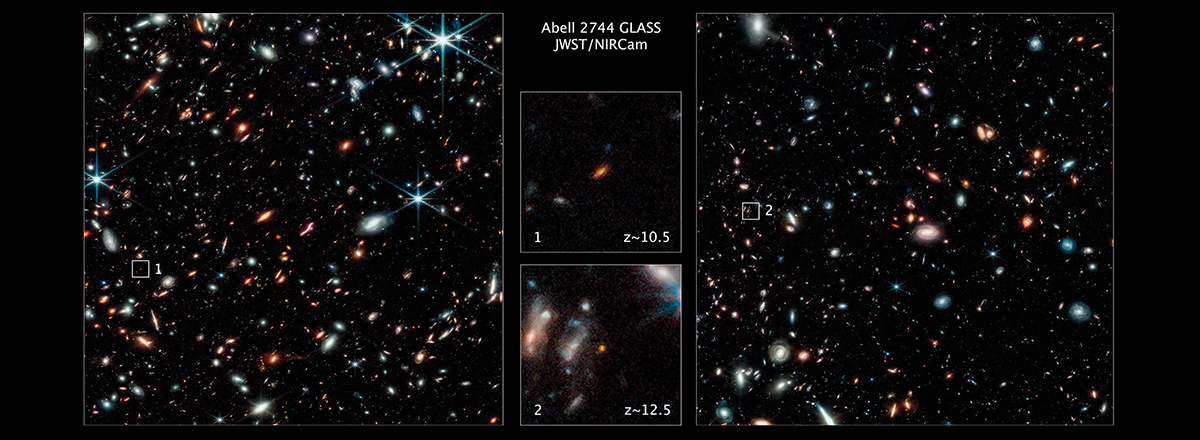James Webb Telescope Spotted Two Unusually Bright Galaxies from the Early Universe
The galaxies are extremely bright, and one of the reasons for this may be that they could have been very massive, with lots of low-mass stars. Or they could be much less massive, consisting of a smaller number of extremely bright Population III stars.

Using NASA's James Webb Space Telescope, astronomers have discovered two old and extremely bright galaxies from the early universe. These galaxies existed approximately 450 and 350 million years after the Big Bang, but given the observations, they already had time to form a large number of stars – enough for astronomers to call the found galaxies unusually bright.
The galaxies were identified in two JWST programs, the Cosmic Evolution Early Release Science Survey (CEERS) and the GLASS-JWST Early Release Science Program (Grism Lens-Amplified Survey from Space).
Data from these surveys identified galaxies with high redshift, which means that the light coming from such galaxies is shifted to the red end of the spectrum because the universe is expanding. The greater redshift means that the light has traveled further before reaching us, so the galaxy is older.
The galaxies are extremely bright, and one of the reasons for this may be that they could have been very massive, with lots of low-mass stars. Or they could be much less massive, consisting of a much smaller number of extremely bright stars, known as Population III stars.
Future spectroscopic measurements with Webb are yet to confirm their age and distances. Moreover, gathering spectroscopy data on these targets will provide a more in-depth look at the content of early galaxies.
According to researchers, these galaxies can radically change the understanding and knowledge of the very first stars.

